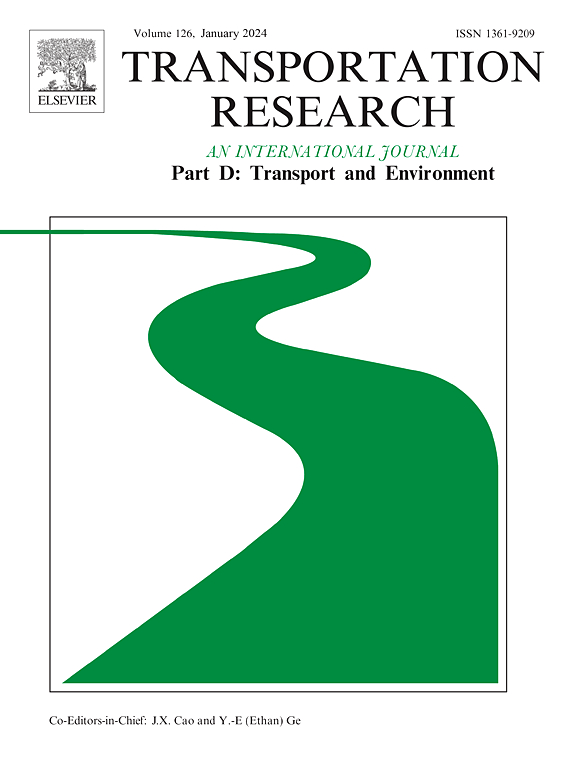Global transport emissions 1850–2020: Historical drivers and lessons for transport decarbonization
IF 7.7
1区 工程技术
Q1 ENVIRONMENTAL STUDIES
Transportation Research Part D-transport and Environment
Pub Date : 2025-09-22
DOI:10.1016/j.trd.2025.104998
引用次数: 0
Abstract
This study analyzes global transport CO2 emissions from 1850 to 2020 using the LMDI method, offering, for the first time, a decomposition over such a long timespan and global scope. Emissions are split into technological and demand-related drivers using a new dataset. Transport efficiency is divided into final-to-useful efficiency and useful energy intensity, a novel distinction. Key findings include: (1) efficiency improvements avoided 9067 Gt CO2 by 2019, with peak impacts in 1950–1973 (-1.62 %/yr) and 2008–2020 (-3.63 %/yr), respectively; (2) these gains were insufficient to counter rising demand, which led to 8252 Gt CO2 in cumulative emissions; (3) demand growth driven by GDP per capita, service intensity, and population accounted for 16 683 Gt CO2 in 2019, with service intensity dominating in 1850–1913 (+3.97 %/yr) and GDP and population drivers peaking in 1950–1973 (+2.57 % and +1.83 %/yr); (4) keeping emissions at 2020 levels through 2029 would require electricity to supply 52 % of transport energy.
1850-2020年全球交通排放:交通脱碳的历史驱动因素和教训
本研究使用LMDI方法分析了1850年至2020年全球运输二氧化碳排放量,首次在如此长的时间跨度和全球范围内进行了分解。使用新的数据集将排放分为技术和需求相关驱动因素。将运输效率分为最终有用效率和有用能源强度,这是一种新颖的区分。主要发现包括:(1)到2019年,效率改进减少了9067 Gt CO2,影响峰值分别出现在1950-1973年(- 1.62% /年)和2008-2020年(- 3.63% /年);(2)这些收益不足以抵消不断增长的需求,导致累计排放8252gt CO2;(3) 2019年人均GDP、服务强度和人口驱动的需求增长占16683gt CO2,其中服务强度在1850-1913年占主导地位(+ 3.97% /年),GDP和人口驱动因素在1950-1973年达到峰值(+ 2.57%和+ 1.83% /年);(4)到2029年将排放保持在2020年的水平,将需要电力提供52%的运输能源。
本文章由计算机程序翻译,如有差异,请以英文原文为准。
求助全文
约1分钟内获得全文
求助全文
来源期刊
CiteScore
14.40
自引率
9.20%
发文量
314
审稿时长
39 days
期刊介绍:
Transportation Research Part D: Transport and Environment focuses on original research exploring the environmental impacts of transportation, policy responses to these impacts, and their implications for transportation system design, planning, and management. The journal comprehensively covers the interaction between transportation and the environment, ranging from local effects on specific geographical areas to global implications such as natural resource depletion and atmospheric pollution.
We welcome research papers across all transportation modes, including maritime, air, and land transportation, assessing their environmental impacts broadly. Papers addressing both mobile aspects and transportation infrastructure are considered. The journal prioritizes empirical findings and policy responses of regulatory, planning, technical, or fiscal nature. Articles are policy-driven, accessible, and applicable to readers from diverse disciplines, emphasizing relevance and practicality. We encourage interdisciplinary submissions and welcome contributions from economically developing and advanced countries alike, reflecting our international orientation.

 求助内容:
求助内容: 应助结果提醒方式:
应助结果提醒方式:


